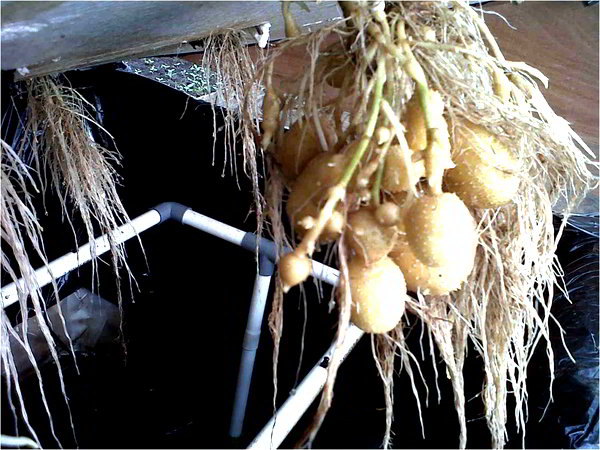Soil plays a crucial part in farm production but it now becomes ineffectual with the advent of soil-less farming or simply hydroponics . This technique in farming has become so indispensable that it even adapts to modern-day setting allowing farmers to grow potato even with limited space and without considering the ‘in- and off- season’ farming allowing uninterrupted production.

This technique in farming works well with potato. Since growing potato does not need soil, this means no soil-borne pests and detrimental disease such as bacterial wilt.
With the wide uses of potato and a low consumption of it, the country must find ways to fully optimize its use especially with the popularity of French fries among fastfoods and restaurants making potato a highly demanded rootcrop. It is, therefore, important that farmers find appropriate means to continuously produce more potatoes year-round.
Potato production has high income potential for farmers, especially those in Northern Luzon and Southern Mindanao where the bulk of the potato produced comes from. However, owing to various constraints such as limited supply of quality planting materials, low quality of potatoes in terms of content and size, lack of technical know-how among our farmers, and postharvest handling, local production could not meet the market demand.
Modified hydroponics
In Southern Mindanao , farmers found an effective way to produce granola and atlantic potatoes (two of the most common varieties grown in the country) through modified hydroponics. The technology was tried for field testing by a team from the Department of Agriculture-Southern Mindanao Integrated Agricultural Research Center (DA-SMIARC).
The technology is called ‘modified’ hydroponics because potatoes were grown using inert medium, sand and coco coir dust, instead of the usual soil. The use of this sterile medium proves a more practical modified hydroponics system because there are no reserve nutrients. This ensures that every plant gets the precise amount of nutrients and water it needs.
Aside from being a no-soil-used and space-friendly method, the developed technology produces better tubers with a much longer shelf life than those potatoes grown in the soil, given that the farm has been managed properly. Labor involved in tending the plants is also markedly reduced. One cycle of planting potatoes needs only 30 man-days.
The how-tos of modified hydroponics
In this technology developed by SMIARC, the inputs/ materials include:10 bags of fertilizer (12-11-18), 1 liter insecticide, 1.5 kg fungicides, 85 kg seed tubers, 1000 pc polyethylene bag (24x24x.006), 20 cu m coarse river sand, 150 bags of coir dust, and 5 gallons of disinfectant. These inputs/materials are for a 200-sq-m area.
Cultural management practices are important to effectively manage and ensure optimum production of potato. Some of these are, securing quality seed tubers, disinfecting the medium with 0.5% sodium hypochlorite solution, hilling-up of the medium during the suggested weeks after planting, dehaulming (cutting all foliage and stem when leaves start turning yellow), hand digging during harvest, and collecting produce using plastic crates.
The total cost for the three cycles amounts to Pph65,865 with a gross income of Pph85,050. This totals to a net income amounting to Pph19, 185 for the 200-sq-m area planted. The return of investment (ROI) is 29.13%.
————–
For more information and copies of their information kit, please contact the Knowledge Management/FITS Center, Bago Oshiro, Tugbok District, Davao City or through telefax: (082) 293-0109 or 293-0136 or email them at: [email protected]
Sources:
1.”Potato production in modified hydroponics” produced by Knowledge Management/FITS Center
2. Bernardino, R.B. 2002. “Rooting for Potato”. Agri-Food Trade Service, Info published by Agriculture and Agri-Food Canada, retrieved from: http://atn-riae.agr.ca/asean/e3401.htm
3. Gagnon, R. 2002. ” Philippines Potato Market Imports Analysis”. Agri-Food Trade Service, Info published by Agriculture and Agri-Food Canada, retrieved from: http://atn-riae.agr.ca/asean/e3381.htm
4.”Philippine postharvest industry profile: Potato” retrieved from http://www.bpre.gov.ph/phindustry/potato.htm
by Rita T. dela Cruz, BAR Chronicle, August 2005 Issue (Vol. 6 No. 8)

That’s really great
Hi,
May i ask if you have learning modules or materials for potato farming through hydroponics?
Thank you in advance.